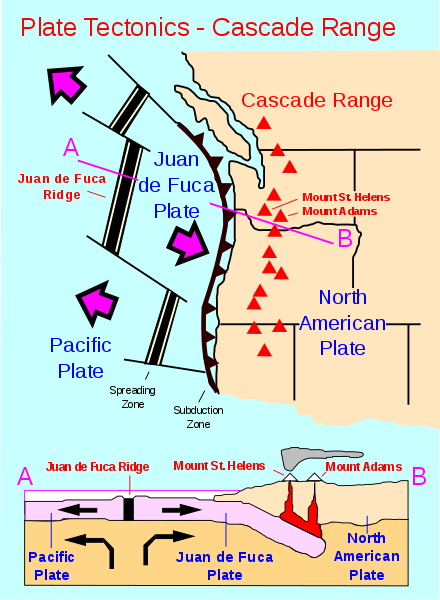San Andreas is a slip fault, as someone said we're not going up or down in elevation, we're simply slipping merrily along it on our way up to San Fran.
There are however many smaller faults between the San Andreas and the coast that through collision and uplift have formed the various mountain ranges and valleys in the region, these are more prone to pushing houses closer into the ocean or up off its foundation.
In the Northeast the San Andreas and pacific rim go off-shore and hugs the coast, this area is not a slip area like the region south of San Fran to Baja, it is an uplift zone where the Pacific Plate has gone under the North American Plate due to Volcanic forces present in that region of the NA Plate (Nor Cal to the Sierras) that caused the Pacific Plate to take the low-road under it. As a result off the North coast a steep drop-off of the tidal shelf offshore occurs and the mountainous Northeast quarter of the state was formed from associated seismic activity of those plates.
From about middle-north (starting West of the North Sacramento Valley) all the way out East and Southeast to the Sierras and continueing up far North and into the Cascades and Canada is mostly Volcanic, including the long-dormant massive Mt. Shasta, CA the massive and active Mt. Lassen, CA and the infamously active and recently erupted Mt. St. Hellens, WA.

As for communities historicaly being effected by tidal and geographic changes, look up the Native Americans indiginous to the Channel Islands just a few miles off the Southern California coast, as well as North Western Native American Coastal tribes effected historicaly by tsunamis since before westerners and record keeping arrived.
To California specificaly, liquidfaction is not as signifigant or likely an issue as most populated areas are on more solid ground that those regions effected by it recently on the other side of the Pacific. That isn't to say they don't exist though, we know of plenty of areas that are built ontop of loose agrigates but they're particulates are much more coarce and heavier than IE: the very fine volcanic agrigate (very fine volcanic (light and pourous) sand) under parts of New Zealand. The hills though here in California aren't all bad though, due to the uplifting the bedrock is close to the surface in most areas, making for ideal pads to construct seismicly safe building foundations/pads and no worries about liquidfaction problems later.